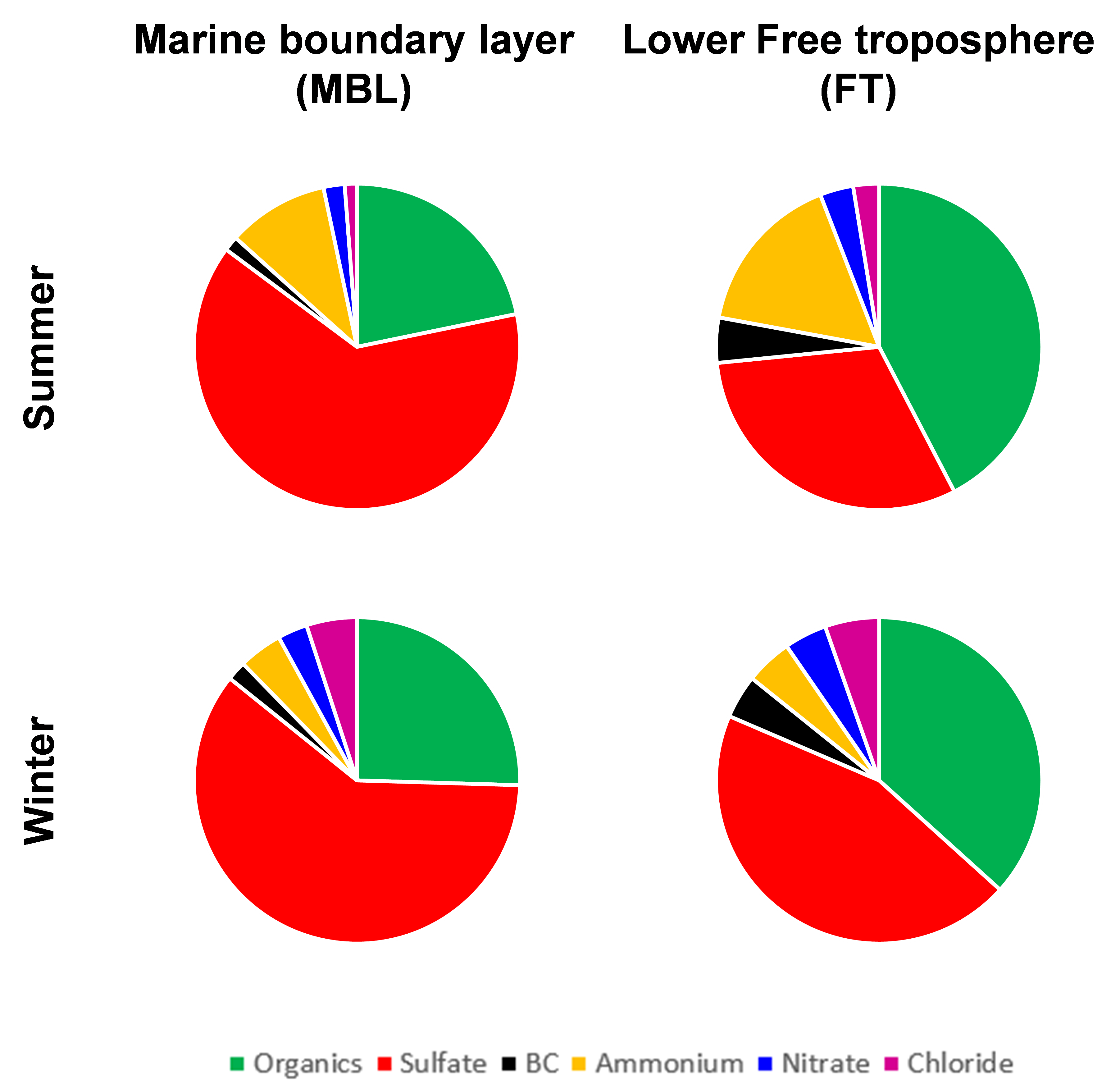ACE-ENA Spotlight: Illuminating Seasonal Aerosol Differences
Published: 21 July 2020
Editor’s note: This is the first entry in a blog series about ARM’s Aerosol and Cloud Experiments in the Eastern North Atlantic (ACE-ENA) field campaign, which took place during 2017 and 2018. ACE-ENA Principal Investigator Jian Wang, Washington University in St. Louis, provides a campaign overview and writes about aerosol findings from the air- and ground-based campaign.

I am excited to share an overview of the ACE-ENA campaign. Our science team designed ACE-ENA to provide comprehensive in situ characterizations of boundary-layer and lower free troposphere (FT) structure, and the properties of low clouds and aerosols in the remote marine boundary layer (MBL).
Marine low clouds are poorly represented in global climate models, and the response of low clouds to changes in atmospheric greenhouse gases and aerosols remains the major source of uncertainty in climate simulations. The albedo and precipitation of marine low clouds are highly susceptible to perturbations in aerosol properties. Our objective is to understand key processes that drive aerosol and cloud properties and interactions under a variety of representative meteorological and cloud conditions.
During the ACE-ENA campaign, our science team worked with ARM Aerial Facility staff to deploy the Gulfstream-159 (G-1) aircraft in the Azores. A total of 39 research flights were conducted: 20 during summer 2017 (June to July) and 19 during winter 2018 (January to February). We designed most of the flights to be near ARM’s Eastern North Atlantic (ENA) observatory on Graciosa Island, where routine measurements of trace gases, meteorological parameters, and aerosol and cloud properties have been ongoing since October 2013. This measurement strategy gave us strong synergy between the in situ measurements onboard the G-1 and the ongoing measurements at the ENA, including state-of-the-art profiling and scanning radars.
The weather pattern over the Azores is largely dominated by the North Atlantic Oscillation, which consists of the semi-permanent Azores high and Icelandic low. Usually in the summer intensive operational period (IOP), the Azores high is the dominant feature in the Atlantic and is commonly located to the south and west of the Azores. The Icelandic low is diminished and often broken into smaller circulations. Usually in the winter IOP, the center of the Azores high shifts to the eastern Atlantic and is primarily located directly over the Azores. Compared to the winter IOP, midlatitude cyclone tracks during the summer IOP are farther north, with less frequent frontal passages across the Azores.
The change in weather pattern contributed to variations in aerosol transport and concentration between the seasons.

The airborne measurements showed a strong seasonal variation of aerosol size distribution (i.e., particle concentration as a function of particle diameter). Particle concentrations, both in the MBL and lower FT, were greater during the summer than those during the winter. The greater particle concentrations during the summer were partially due to more frequent long-range transport of North American emissions. In addition, stronger precursor emissions due to ocean biological activity and less efficient removal by precipitation also contributed to the seasonal variation.


While particle chemical composition showed a clear difference between the MBL and FT, the seasonal variation of particle chemical composition was quite minor.
In the MBL, particle composition was dominated by sulfate, which derives from the oxidation of dimethyl sulfide emitted from the ocean surface. The fraction of organics was greater in the FT due to long-range transported continental emissions, especially during the summer.
The 39 flights during ACE-ENA provided comprehensive measurements of aerosol properties under a variety of representative conditions. For example, flights on July 8, 2017; February 8, 2018; and February 11, 2018, sampled aerosol under the Azores high, pre-frontal, and post-frontal conditions, respectively.
Our next step for ACE-ENA aerosol research will be focusing on aerosol processes (e.g., new particle formation and entrainment of free tropospheric air) and how these processes vary with synoptic condition.
Check back next month for a new blog post about the ACE-ENA campaign. To access ACE-ENA data, log in to the ARM Data Center. (Go here to create an account to download the data.)
Keep up with the Atmospheric Observer
Updates on ARM news, events, and opportunities delivered to your inbox
ARM User Profile
ARM welcomes users from all institutions and nations. A free ARM user account is needed to access ARM data.


















